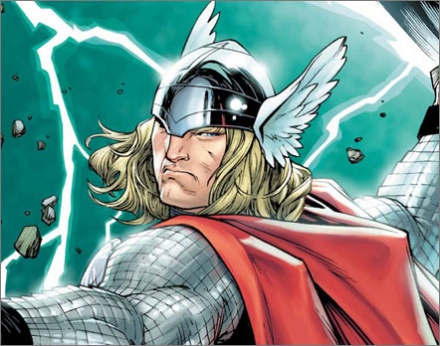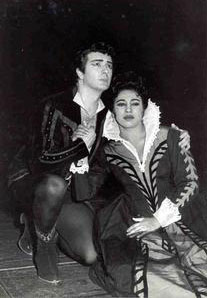 Sounds like something yummy that Gregory Peck might buy for Audrey Hepburn on a Roman holiday, doesn’t it?
Sounds like something yummy that Gregory Peck might buy for Audrey Hepburn on a Roman holiday, doesn’t it?The “aria di sorbetto” is one of those fun operatic insider terms. It gets its name from the days when vendors sold sorbetti (sorbets) in Italian opera houses while one of the comprimario singers (the secondary characters) had a brief solo. If you were buying your frosty treat or offering one to your lady friend, you wouldn’t miss anything important.
Sounds pretty good, right? Going to the opera was a much more social affair in the days before Things Got Really Serious with Wagner in the 1870s. People could talk, get something to eat, and go in and out of the theater. In the boxes, wealthy patrons gambled, dined, and canoodled.
Besides giving the concessionaires one last chance to get rid of their inventory before closing up for the night, the “sherbet arias” had practical functions. They gave a minor singer a chance to shine--especially if she was the impresario’s mistress--and let the star singers rest or change costumes. Sometimes the arias were sung in front of a backdrop near the front of the stage, giving the crew time to change the scenery.
Since these arias weren’t vehicles for the big stars or essential to the plot, they were usually written by a lesser composer who didn’t get program credit. In Rossini’s La cenerentola (Cinderella), the sherbet aria goes to Clorinda, one of the nasty stepsisters. “Sventurata mi credea” was composed by Luca Agolini. Never heard of him before? Me either.
Here’s an insanely virtuosic rendition by Gianna Rolandi with New York City Opera (in English; 1980). Notice that she sings it in front of the curtain, as was the 19th century practice.
A funny story from Rossini
If you’ve seen Rossini’s The Barber of Seville, you might remember the housekeeper’s lament in the 2nd act about being an old maid. It’s sort of silly and repetitive, but a good character singer can make a success with it.
Someone once asked Rossini if, as rumored, somebody else had written this aria. Rossini responded,
“The aria di sorbetto? I do boast of having composed that, and it reminds me of another aria di sorbetto which was funny enough.
“I had an awful seconda donna [second lady] for my opera, Ciro in Babilonia. Besides being hideously ugly, she had the most wretched voice. After trying it with the utmost care I discovered that she possessed one single good note, the B-flat above the staff. So I wrote an aria for her in which she had nothing but this note to sing. All the rest I put into the orchestra, and as it was liked and applauded, my singer of the one note was delighted with her triumph.”As the 19th century progressed, operas gained dramatic cohesion by having fewer free-standing arias. The aria di sorbetto became obsolete. These days they’re often cut because they don’t advance the plot and might send the performance into union overtime.
Here’s a performance by Claudia Waite of Berta’s aria “Il vechiotto cerca moglie” from The Barber of Seville (Metropolitan Opera, 2007).
Here's a yummy sorbet recipe!








 The nice lady sitting next to me in the movie theater asked me this. Renée was spitting on them! Symbolically, that is. It's spelled "toi, toi, toi," and it's something you say to wish performers good luck. It's the European equivalent of "Break a leg." The theory is that if you say something nice about a person, it brings them bad luck. The reverse is therefore true, so if you wish them covered with spittle, they should do well. Charming!
The nice lady sitting next to me in the movie theater asked me this. Renée was spitting on them! Symbolically, that is. It's spelled "toi, toi, toi," and it's something you say to wish performers good luck. It's the European equivalent of "Break a leg." The theory is that if you say something nice about a person, it brings them bad luck. The reverse is therefore true, so if you wish them covered with spittle, they should do well. Charming!


